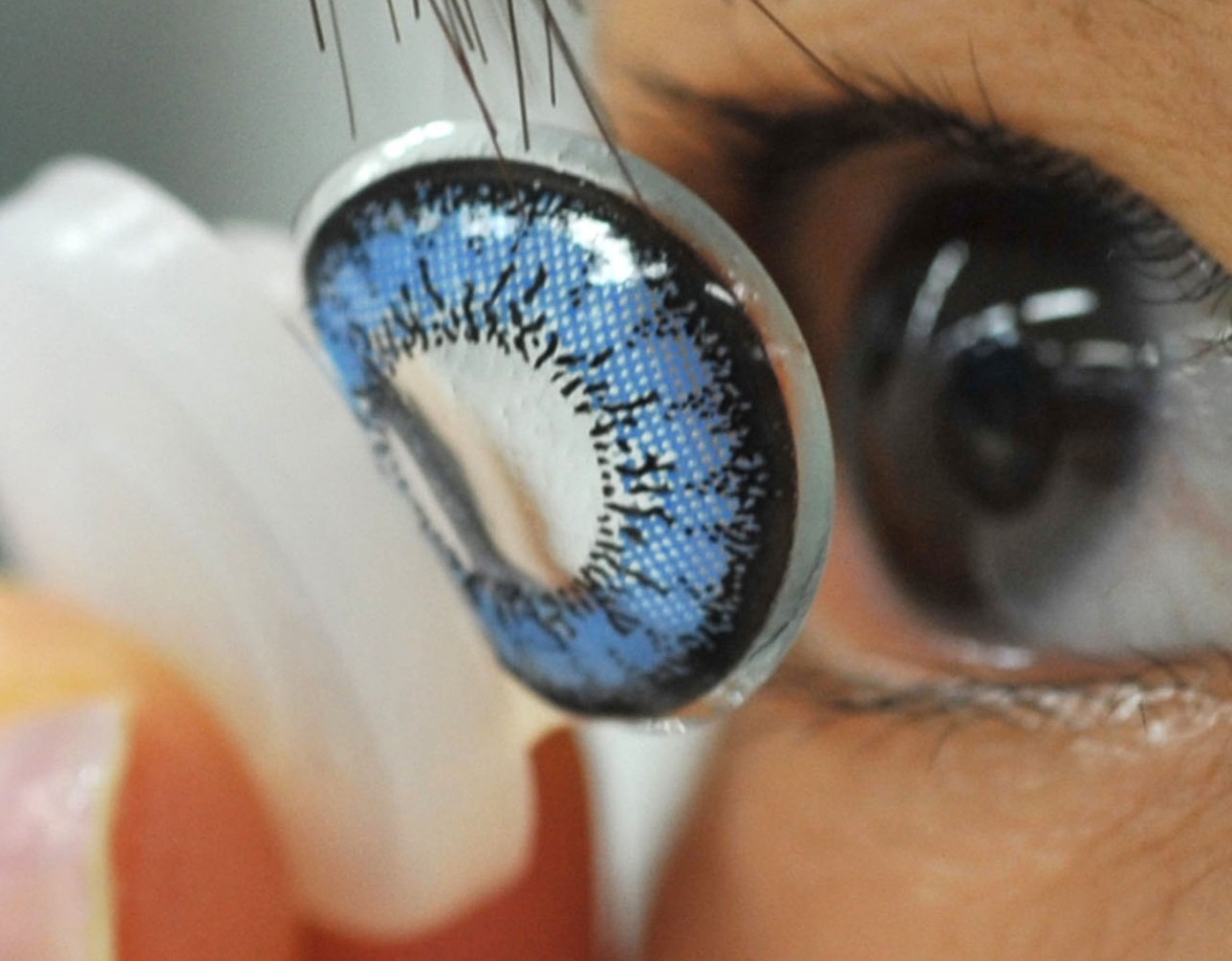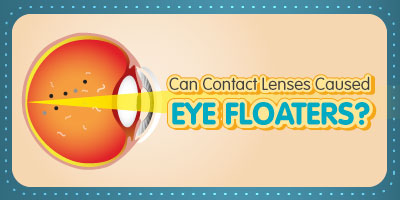If you are seeing shadows or dots floating around especially when you are staring at something plain and bright, you are most probably seeing eye floaters. You might be wondering can contact lenses caused eye floaters? This is because the frequency of seeing these shadows seem to increase when you are wearing contact lenses.
Table of contents
Estimated reading time: 7 minutes
What is Eye Floater?
Before we delve deeper on the topic ‘Can contacts caused eye floaters?’, let’s first understand what is eye floater. Mayo Clinic explains that eye floaters are spots in your vision. They are shadows or specks of black or grey that drift about when you move your eyes. These shadows are most obvious when you look at something bright, for example a piece of white paper, a plain wall, or the blue sky. They appear to dart away when you try to look at them. Sometimes, these eye floaters can be annoying but they shouldn’t interfere with your vision and usually, you learn to live with them.
Eye floaters come in different shapes and sizes
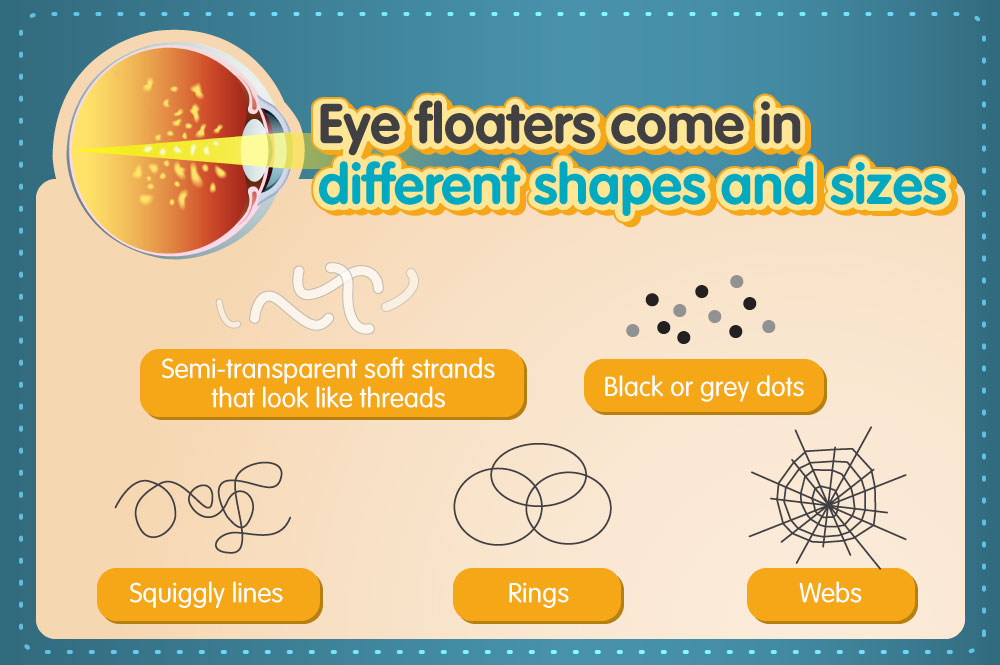
- Semi-transparent soft strands that look like threads
- Black or grey dots
- Squiggly lines
- Rings
- Webs
How Do I Know If I Have Eye Floater?
There are some symptoms to help you identify if you have eye floaters:
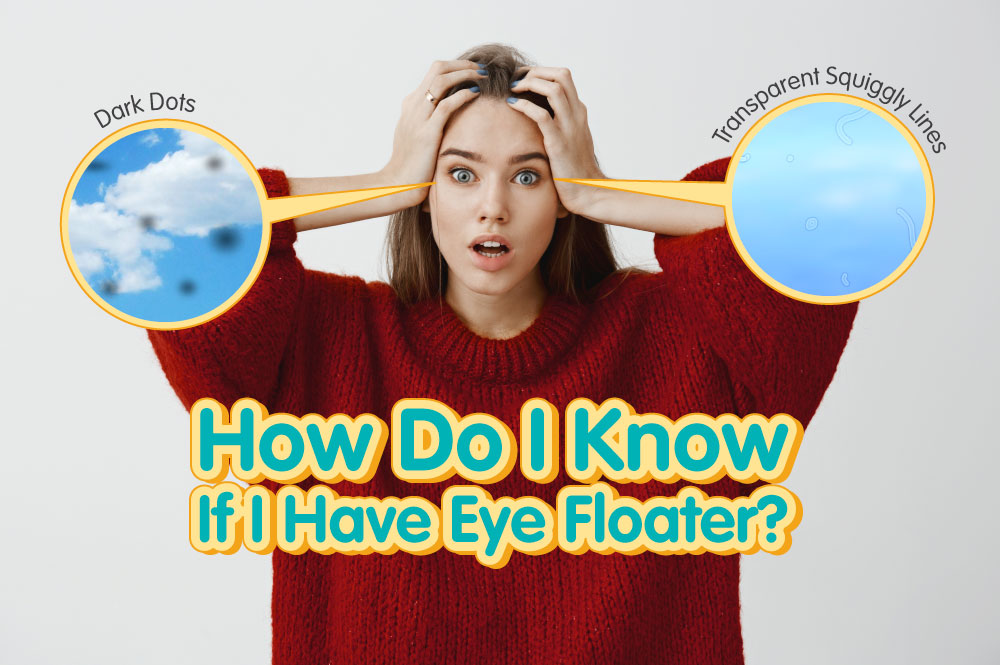
- You notice small shapes of transparent squiggly lines or dark dots in your vision that appear to be floating
- These spots move when you move your eyes and seem to magically move away quickly when you try to look at them
- There are spots that are most noticeable when you look at a plain bright background, such as a blue sky or a white wall
- Gray small shapes or strings that eventually settle down and drift out of the line of vision when you stop moving your eyes
Causes of Eye Floaters
Most of the time, eye floaters are caused by age-related changes when the jelly-like substance called the vitreous gel in the back of your eye becomes more liquid. As a result, microscopic fibers within the vitreous tend to clump and cast tiny shadows on your retina. Apart from normal aging process, eye floaters may also be caused by other diseases or conditions. Let’s take a look at some of the common causes of eye floaters:
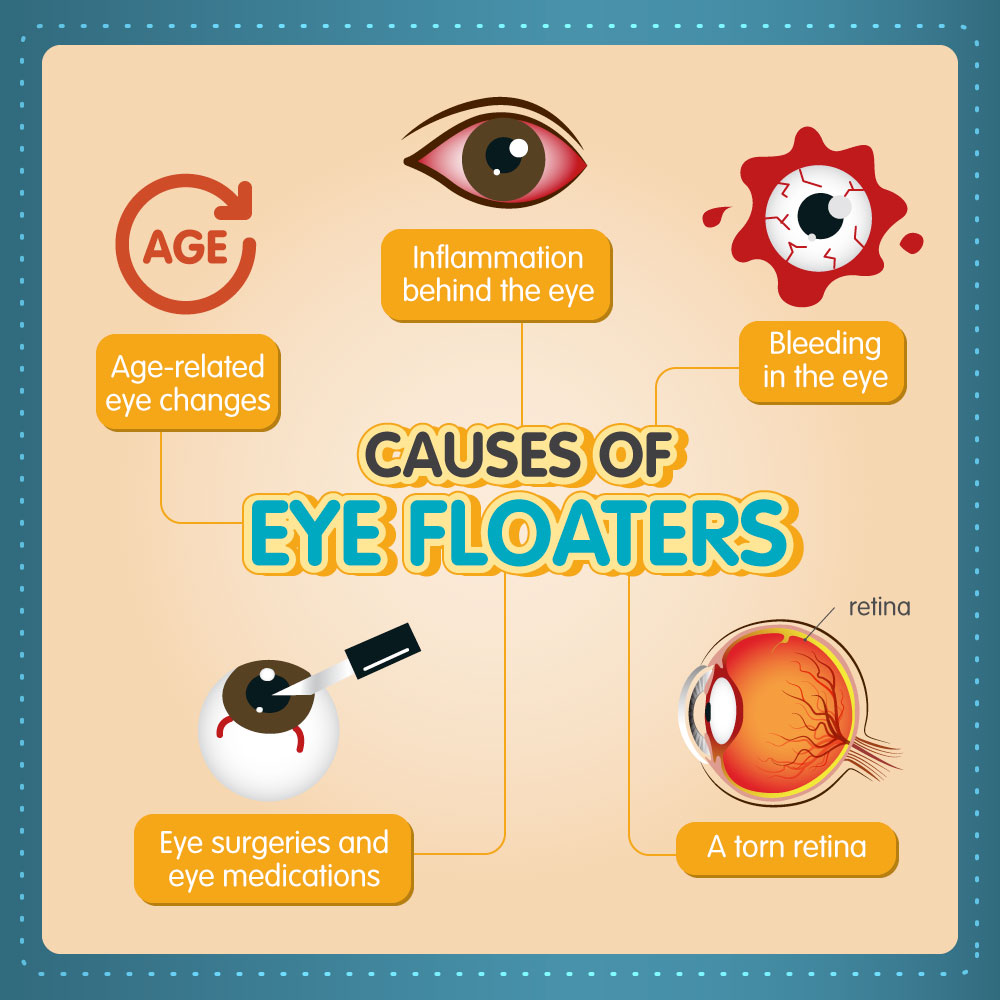
- Age-related eye changes. Vitreous gel functions to fill our eyeballs and maintain their round shape. As we age, this gel changes and becomes more liquid. When this happens, it pulls away from the eyeball’s interior surface and begin to shrink or sag, as it clumps and get stringy. These debris are the culprits that cast tiny shadows on our retina.
- Inflammation behind the eye. Inflammation in the layers of the uvea in the back of the eye called posterior uveitis can cause the release of inflammatory debris into the vitreous. The causes of posterior uveitis may be from infection or inflammatory diseases.
- Bleeding in the eye. People who suffer from diabetes, hypertension, blocked blood vessels may experience bleeding in the vitreous. Injury can also cause bleeding into the vitreous. These blood cells are seen as floaters.
- A torn retina. Retinal tear happens when a sagging vitreous tugs on the retina with enough force to tear it. A retinal tear may lead to retinal detachment which can result in permanent vision loss if left untreated.
- Eye surgeries and eye medications. Some medications injected into the vitreous can result in air bubbles. These bubbles are seen as shadows until your eyes absorb them. Moreover, there are certain vitreoretinal surgeries that add silicone oil bubbles into the vitreous. These oil bubbles are recognized as floaters.
Can Wearing Colored Contact Lenses Caused Eye Floaters?
Most floaters are small protein specks that floats around your field of vision according to National Eye Institution, and they increase with age. If you are near-sighted, you’re more likely to have eye floaters. There are various causes to eye floaters, of which we have highlighted above, but wearing colored lenses or prescriptive contact lenses isn’t one of them and doesn’t directly cause eye floaters
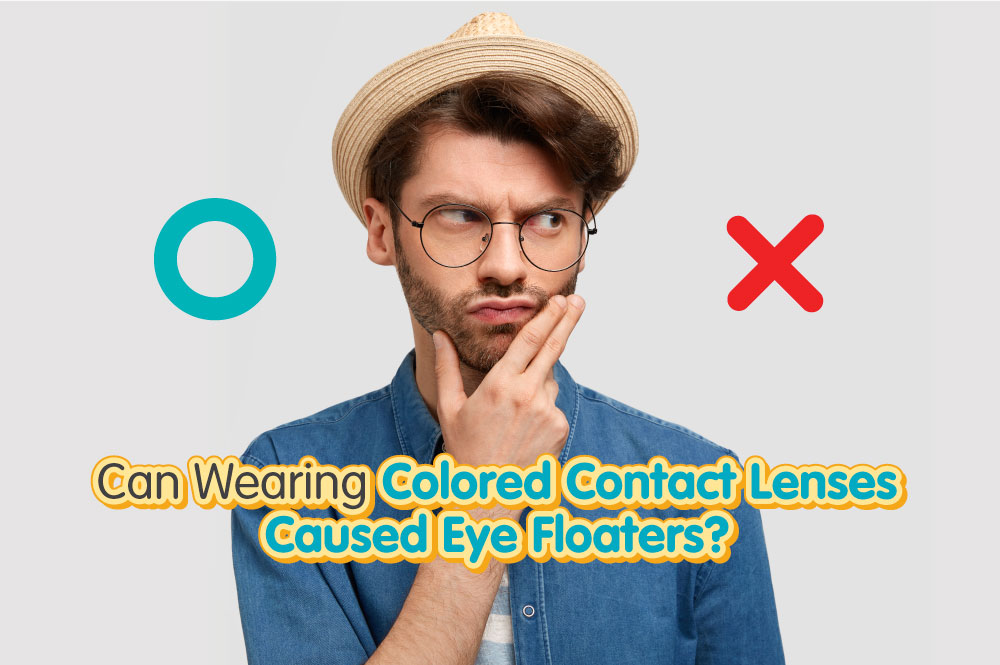
Nevertheless, colored contact lenses may result on temporary floaters or blurry vision if you fail to practice proper hygiene or wear-and-care directions for contact lenses. Dirty or contaminated colored contacts introduce bacteria to your eye, causing it to get infected and inflamed. Inflammation in the eyes releases debris into the vitreous area and are subsequently seen as floaters. If poor hygiene habit continues, wearing colored contact lenses will not only resulted in floaters, but more severe or damaging eye issues.
Therefore, keeping your eyes healthy is vital. Always ensure that your colored contact lenses are clean by making sure that you wash your hands before and also after you touch your contact lenses. In addition, make sure your eye prescription is up to date by getting a regular eye exam. Bear in mind that prescription for glasses cannot be used for colored contact lenses. Use the correct contact lens solution and tools when you clean your contact lenses to sterilize it properly and prevent contamination. Nowadays, you can also get travel accessories for your contact lenses conveniently on stores online.
Read More: Can Contact Lenses cause Subconjunctival Hemorrhage?
Do I Need to Get Treatment for Eye Floaters?
Eye floaters are harmless in nature and often, we just leave them alone. If you have eye floaters that don’t change over time, chill. When to see a doctor?
- You notice a sudden significant increase of the number of floaters
- A sudden appearance of new floaters
- Experience a loss of vision, pain in the eye, flashes of light
- Darkness on any side or sides of your eyes (loss of peripheral vision)
The above symptoms, although most of the time painless, could be caused by a retinal tear and requires immediate attention. As a rule of thumb, when anything seems out of place, please consult an eye doctor or ophthalmologist immediately.
How is Eye Floater Diagnosed?
Ophthalmologist or eye doctor will do a thorough eye exam including eye dilation to take a good look at the back of your eyes and the vitreous in order to identify the cause of the floaters.
Although most floaters are harmless and don’t require treatment, floaters as a result of bleeding from diabetes or inflammation will need to be treated. Unless your floaters become obstacles to your vision, you usually do nothing about them and will eventually get use to them or notice them less often.
There are some treatments to consider if floaters impair your vision:
- Remove vitreous through surgery – small incision is made in vitreous to remove the affected part and replace with solution to help maintain your eye’s shape.
- Disrupt the floaters with laser – using laser to break up the floaters in the vitreous.
The treatments carry risks of injuring the retina. Consult your ophthalmologist on your options and risks.
Conclusion
Finally, you can still wear colored contact lenses if you have floaters, which are pretty common in most people. Always get your colored contact lenses from trustable retailers to ensure that your lenses are of good quality and medically certified. Do not ever compromise quality for cheap colored contact lenses and jeopardize the safety and health of your eyes. Check out Uniqso for a myriad of colored contact lenses for all occasions with great deals and discounts.
Read More:

